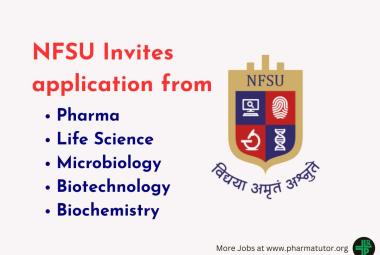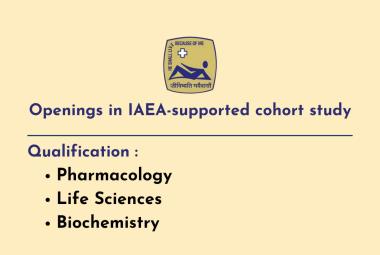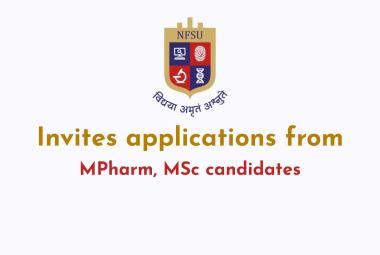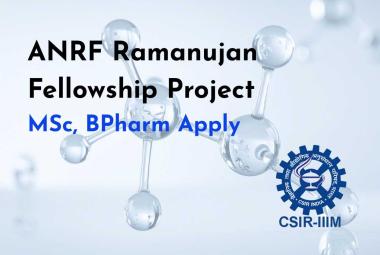ABOUT AUTHORS :
Disha Chouhana*1, Dr. Rajesh Mujariya2
1*Department of Pharmaceutical Chemistry, School of Pharmaceutical Science and Research , Balaghat, Madhya Pradesh, India
2Department of Pharmaceutics, School of Pharmaceutical Science and Research , Balaghat, Madhya Pradesh, India
rajeshmujariya@gmail.com
ABSTRACT :
There is a new public health crises threatening the world with the emergence and spread of 2019 novel corona virus (2019-nCoV) or the severe acute respiratory syndrome corona virus 2 (SARS-CoV-2). The virus originated in bats and was transmitted to humans through yet unknown intermediary animals in Wuhan, Hubei province, China in December 2019. There have been around 96,000 reported cases of corona virus disease 2019 (COVID-2019) and 3300 reported deaths to date (05/03/2020). The disease is transmitted by inhalation or contact with infected droplets and the incubation period ranges from 2 to 14 d.
INTRODUCTION
There is a new public health crises threatening the world with the emergence and spread of 2019 novel corona virus (2019-nCoV) or the severe acute respiratory syndrome corona virus 2 (SARS-CoV-2). The virus originated in bats and was transmitted to humans through yet unknown intermediary animals in Wuhan, Hubei province, China in December 2019. There have been around 96,000 reported cases of corona virus disease 2019 (COVID-2019) and 3300 reported deaths to date (05/03/2020). The disease is transmitted by inhalation or contact with infected droplets and the incubation period ranges from 2 to 14 d. The symptoms are usually fever, cough, sore throat, breathlessness, fatigue, malaise among others. The disease is mild in most people; in some (usually the elderly and those with comorbidities), it may progress to pneumonia, acute respiratory distress syndrome (ARDS) and multi organ dysfunction [1].
2. History
Corona viruses are enveloped positive sense RNA viruses ranging from 60 nm to 140 nm in diameter with spike like projections on its surface giving it a crown like appearance under the electron microscope; hence the name corona virus. Four corona viruses namely HKU1, NL63, 229E and OC43 have been in circulation in humans, and generally cause mild respiratory disease [1].
The emergence of severe acute respiratory syndrome corona virus 2 (SARS-CoV-2; previously provision- ally named 2019 novel corona virus or 2019-nCoV) disease (COVID-19) in China at the end of 2019 has caused a large global outbreak and is a major public health issue. As of 11 February 2020, data from the World Health Organization (WHO) have shown that more than 4300 confirmed cases have been identified in 28 countries/regions, with > 99% of cases being detected in China. On 30 January 2020, the WHO declared COVID-19 as the sixth public health emergency of international concern. SARS-CoV-2 is closely related to two bat-derived severe acute respiratory syndrome-like corona viruses, it is spread by human-to-human transmission via droplets or direct contact, and infection has been estimated to have mean incubation period of 6.4 days and a basic reproduction number of 2.24–3.58. Among patients with pneumonia caused by SARS-CoV-2 (novel corona virus pneumonia or Wuhan pneumonia), fever was the most common symptom, followed by cough. Bilateral lung involvement with ground-glass opacity was the most common finding from computed tomography images of the chest. The one case of SARS-CoV-2 pneumonia in the USA is responding well to remdesivir, which is now undergoing a clinical trial in China. Currently, controlling infection to prevent the spread of SARS-CoV-2 is the primary intervention being used. However, public health authorities should keep monitoring the situation closely, as the more we can learn about this novel virus and its associated outbreak, the better we can respond.
Since the emergence of the 2019 novel corona virus (2019- nCoV) infection in Wuhan, China, in December 2019, it has rapidly spread across China and many other countries children, and elderly patients can also be infected by SARS-CoV-2. In addition, nosocomial infection of hospitalized patients and healthcare workers, and viral transmission from asymptomatic carriers are possible. The most common finding on chest imaging among patients with pneumonia was ground-glass opacity with bilateral involvement. Severe cases are more likely to be older patients with underlying comorbidities compared to mild cases. Indeed, age and disease severity may be correlated with the outcomes of COVID-19. To date, effective treatment is lacking; however, clinical trials investigating the efficacy of several agents, including remdesivir and chloroquine, are underway in China. Currently, effective infection control intervention is the only way to prevent the spread of SARS-CoV-2. [2]
3. Epidemiology
As of March 28, 2020, data from the WHO revealed altogether 455,538 cases of COVID-19, 171 countries or regions have reported confirmed cases, including main-land China, Japan, Singapore, Hong Kong Special Adminis-trative Region (SAR), Thailand, South Korea, Taiwan, Australia, Malaysia, Germany, Vietnam, the United States, Macao SAR, the United Arab Emirates, Canada, France, the Philippines, the United Kingdom, Italy, India, Russia, Finland, Sweden, Sri Lanka, Cambodia, Nepal, Spain, Belgium, Iran, Egypt, Israel, and Lebanon. In addition, 643cases were found in international conveyance Diamond Princess. China has the largest number of patients with COVID-, followed by South Korea, Japan, and Singapore. To date, the re-ported number of deaths is 2247 and only 11 occurred outside of mainland China, including two each in Hong Kong Special administrative regions (SAR), Iran, and Diamond Princess, and one each in Taiwan, South Korea, Japan, Philippines, and France. However, asymptomatic patients or patients with mild COVID-19 symptoms may not seek health care, nor receive diagnosis, which leads to under-estimation of the burden of COVID-19. [3]
1. Severity of COVID-19
COVID-19 was defined as the respiratory disease caused bySARS-CoV-2 that emerged in China in 2019 (https://www.who.int/westernpacific/emergencies/covid-19).Theclinical manifestations of COVID-19 are protean, which include asymptomatic carrier, ARD, and pneumonia of varying degrees of severity. First, asymptomatic cases were diagnosed based on positive viral nucleic acid test results, but without any COVID-19 symptoms, such as fever, gastrointestinal, or respiratory symptoms, and no significant abnormalities on chest radiograph7,8However, the transmission of COVID-19 through asymptomatic carriers via person-to-person contact was observed in many re-ports. [4]
2. Age and sex
Initially, most reported COVID-19 cases in Wuhan were adult patients; however, all of these cases had pneumonia. Their median or mean ages were 55.5, 49.0, disorder, and hypertension was the most common under-lying disease (14.9%), followed by diabetes mellitus(7.4%).Another large study on COVID-19 cases of varying degrees of severity also showed that hypertension was the most common underlying disease.
In summary, these studies disclosed several significant findings. First, although most patients with COVID-19 were middle-aged adults, elderly patients and children also contracted COVID-19. Second, there is a higher prevalence of men with COVID-19 than that of women. [5]
4. Practice Points from an Indian Perspective
At the time of writing this article, the risk of corona virus in India is extremely low. But that may change in the next few weeks. Hence the following is recommended [1]:
• Healthcare providers should take travel history of all patients with respiratory symptoms, and any international travel in the past 2 wks as well as contact with sick people who have travelled internationally.
• They should set up a system of triage of patients with respiratory illness in the outpatient department and give them a simple surgical mask to wear. They should use surgical masks themselves while examining such patients and practice hand hygiene frequently.
• Suspected cases should be referred to government designated centers for isolation and testing (in Mumbai, at this time, it is Kasturba hospital). Commercial kits for testing are sooner going to be available in India.
• Patients admitted with severe pneumonia and acute respiratory distress syndrome should be evaluated for travel history and placed under contact and droplet isolation. Regular decontamination of surfaces should be done. They should be tested for etiology using multiplex PCR panels if logistics permit and if no pathogen is identified, refer the samples for testing for SARS-CoV-2.
• All clinicians should keep themselves updated about recent developments including global spread of the disease.
• Non-essential international travel should be avoided at this time.
• People should stop spreading myths and false information about the disease and try to allay panic and anxiety of the public.
CONCLUSIONS
This review provides updated information about COVID-19. SARS-CoV-2 can affect patients of all ages. COVID-19 can present as asymptomatic carriage, ARD, and pneumonia. Severe cases are more likely to be older and to have increased underlying comorbidities compared to mild cases. Age and disease severity can be correlated with the outcomes of COVID-19. To date, effective treatment forSARS-CoV-2 is lacking; however, two trials investigating the clinical efficacy of remdesivir are underway in China .Currently, effective infection control intervention is the only way to prevent the spread of SARS-CoV-2.
REFERENCES
1) Singhal T, A Review of Corona virus Disease-2019 (COVID-19). The Indian J of Pediatrics 2020;87:281-286.
2) Lu H, Stratton CW, Tang YW. Outbreak of pneumonia of unknown etiology in Wuhan China: the mystery and the miracle. J Med Virol 2020 Jan 16 [Epub ahead of print]. doi: 10.1002/jmv.25678.
3) WHO.https://www.who.int/docs/default-source/coronaviruse/situation reports/21February2020-sitrep-32-covid-19.
4) https://doi.or-g/10.1093/infdis/jiaa077. pii: jiaa077.Coronavirus 2 (SARS-CoV-2): facts and myths7+MODELPlease cite this article as: Lai C-C et al., Asymptomatic carrier state, acute respiratory disease, and pneumonia due to severe acute respiratory syndrome coronavirus 2 (SARS-CoV-2): Facts and myths, Journal of Microbiology, Immunology and Infection, https://doi.org/10.1016/j.jmii.2020.02.012.
5) Wang W, Tang J, Wei F. Updated understanding of the outbreak of 2019 novelcoronavirus (2019-nCoV) in Wuhan, China. J Med Virol 2020;92:441–7, doi:http://dx.doi.org/10.1002/jmv.25689.
NOW YOU CAN ALSO PUBLISH YOUR ARTICLE ONLINE.
SUBMIT YOUR ARTICLE/PROJECT AT admin@pharmatutor.org
FIND OUT MORE ARTICLES AT OUR DATABASE









